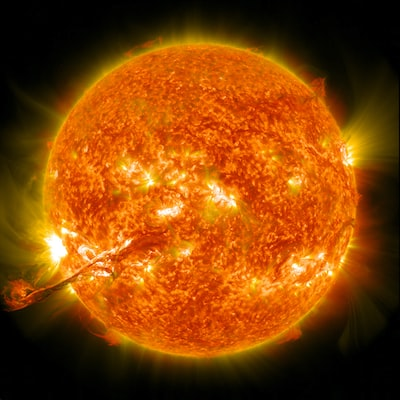Exploring the Infinite: Does Space Have an End?
Written on
Chapter 1: The Boundless Nature of Space
When discussing space, it's misleading to suggest that it has an "end." Instead, space is an immense and continuous realm that includes everything from Earth to distant galaxies and stars. There is no definitive boundary where space simply ceases to exist; it is believed to extend infinitely in all directions. Beyond what we can observe, it is possible that there exist additional galaxies and even entire universes.
Section 1.1: The Number of Galaxies
Current estimates suggest that there are roughly 2 trillion galaxies in the observable universe. This figure is continually updated as new discoveries are made and our comprehension of the cosmos evolves. Recent advancements in telescopes and observational tools have significantly increased our knowledge of distant regions of space. Many galaxies, however, remain invisible to the naked eye and even to our most powerful telescopes, yet they can be identified through their gravitational effects or the electromagnetic radiation they emit or absorb.
Subsection 1.1.1: Visual Insights into the Universe

Section 1.2: Understanding the Sun
The Sun, a star at the heart of our solar system, is a massive sphere of gas held together by its own gravitational force. Composed primarily of hydrogen and helium, it produces energy via nuclear fusion occurring in its core.
At the core, temperatures soar to around 27 million degrees Fahrenheit (15 million degrees Celsius), where hydrogen atoms collide and fuse into helium, releasing immense energy in the process. This energy travels outward through the Sun's layers and is eventually emitted into space as light and heat.
The Sun's surface, known as the photosphere, has a temperature of about 10,000 degrees Fahrenheit (5,500 degrees Celsius). Here, we observe the Sun's brightness and warmth, characterized by a constant movement of hot and cool gases.

Chapter 2: The Earth-Sun Distance
The average distance from Earth to the Sun is approximately 93 million miles (149.6 million kilometers), a measurement known as an "astronomical unit" (AU). This distance serves as a standard for measuring other distances within our solar system.
Earth's orbit is elliptical, resulting in slight variations in distance throughout the year. At its closest (perihelion), Earth is about 91.5 million miles (147 million kilometers) from the Sun, while at its farthest (aphelion), the distance increases to about 94.5 million miles (152 million kilometers).
Despite this vast distance, the Sun's gravitational influence keeps Earth in orbit. The gravitational force diminishes with distance; thus, planets nearer to the Sun, like Mercury and Venus, have shorter orbital periods compared to those further out.


Exploring Further: Videos on the Universe
To dive deeper into these concepts, check out the following videos:
The first video titled "What's At The End Of The Universe?" explores the mysteries surrounding the limits of our universe and what lies beyond.
The second video, "What Is Beyond the Edge of the Universe?" investigates theories and hypotheses regarding the existence of realms beyond what we can currently observe.
Thank you for your reading time!